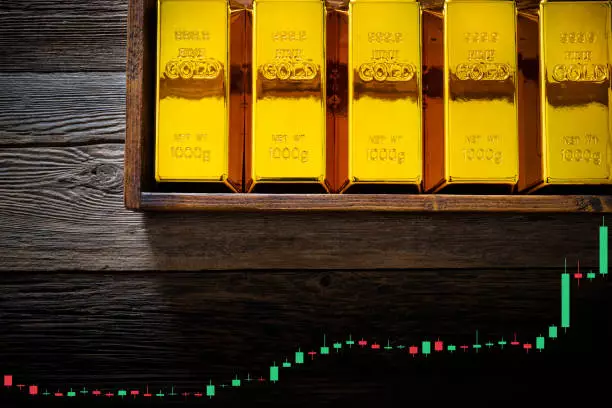As we delve into the financial arena of 2025, one asset class has captivated investors with its exceptional performance: Gold (XAU/USD). Witnessing a remarkable rise of 19% in the first quarter, gold has notably outshined major financial instruments such as the US S&P 500, US Dollar Index, and Bitcoin, which saw declines of -4.6%, -4%, and -11.7%, respectively. This meteoric ascent culminated in an all-time high of US$3,500 on April 22. However, following this milestone, gold faced a 10% correction to US$3,120 by mid-May, prompted by the resurgence of the US dollar and a shift in market sentiment towards riskier assets.
Analyzing the Underlying Economic Context
The backdrop against which gold’s volatility unfolds is nuanced and complex. The deterioration of US consumer sentiment coupled with burgeoning inflation expectations signals a persistent risk of stagflation. Recent consumer sentiment surveys have paint an alarming picture: a drop to 50.8 in May, marking a five-month consecutive decline and recording the lowest levels since June 2022. This decline, below market forecasts, implies that American households are grappling with economic uncertainty, which directly influences spending behaviors and presents implications for retail sales – critical components in measuring economic health.
As consumers tighten their belts, the interplay between sentiment and inflation becomes increasingly crucial. The University of Michigan survey also unveiled accelerating inflation expectations, with one-year forecasts climbing to 7.3%. This uptick is not just a statistic; it sends ripples through the economy, inferring higher costs of living, eroding purchasing power, and prompting investors to reconsider their tradings strategies, often turning to gold as a hedge against economic turbulence.
The Technical Landscape of Gold Trading
Examining gold from a technical analysis perspective reveals illuminating insights into its price trends and potential future movements. The mid-April to mid-May corrective phase, characterized by a 10% downturn, met critical support at the 50-day moving average. Such technical indicators suggest that buyers may soon regain control. The recent stabilization of the Relative Strength Index (RSI) has also indicated a potential bullish turnaround. A climb above US$3,305 could ignite renewed upward momentum, testing key resistance levels towards US$3,435 and potentially revisiting that elusive US$3,500 mark.
Conversely, should gold slip below US$3,056, the narrative could shift dramatically, presenting a scenario wherein further declines might expose long-term support at US$2,833—an area fortified by the 200-day moving average. The tension between these potential outcomes poses a critical question for traders: will the golden asset bounce back into a bullish cycle, or is a bear trend on the horizon?
Market Sentiment and the Geopolitical Landscape
In a climate already fraught with uncertainty, additional external factors contribute to gold’s allure. The recent thawing of US-China trade relations and a pause on tariff reductions have arguably uplifted risk sentiment among investors. However, such circumstances may provide only temporary relief. As optimism wanes and geopolitical tensions persist, investment preferences can shift dramatically, underscoring gold’s timeless role as a safe haven.
Against a backdrop of amplified inflation pressures and consumer apprehension, the psychological motivations for investing in gold become apparent. Rather than a traditional asset rooted in speculative growth, gold embodies a shield against economic vagaries. This protective quality becomes increasingly attractive in scenarios where market fundamentals are projected to weaken.
The Evolving Dynamics of Gold Demand
The burgeoning demand for gold as a hedge against inflation and economic uncertainty suggests its entrenched position in investors’ portfolios. Historically, periods marked by high inflation and stagnant economic growth have fueled gold’s ascent. As more market participants look towards the yellow metal as means of capital preservation, the demand dynamics may significantly influence future pricing trajectories.
Gold’s fundamental qualities, including its rarity, intrinsic value, and historical performance during tumultuous economic times, position it favorably in an evolving financial landscape. Moreover, as central banks remain vigilant about inflation and consumer sentiment, a broader pivot towards gold can be expected, further solidifying its reputation as a reliable store of value amidst the unpredictability of modern economies.
As we navigate the intricate economic tapestry of 2025, gold remains not just an asset but a beacon for those seeking refuge from financial storms. The next chapters of its saga are poised to unfold, driven by prevailing winds of consumer confidence, global economic conditions, and the unyielding dynamics of supply and demand in the precious metals market.

